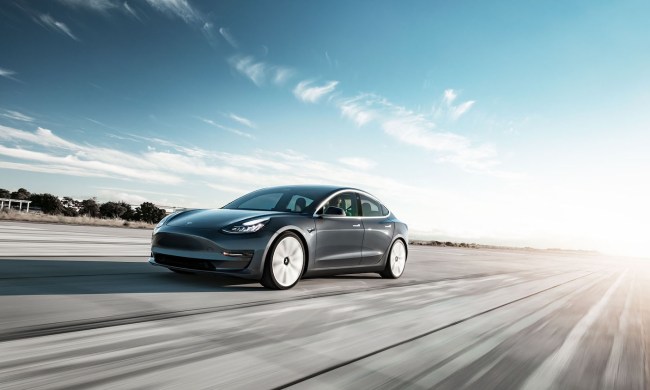Ford’s self-driving car program is experiencing delays, but the automaker hopes that others will pick up the baton. Ford is releasing what it calls a “comprehensive self-driving vehicle dataset” to researchers. The goal is to promote further research and development of autonomous driving tech, Tony Lockwood, Ford autonomous vehicle manager, said in a blog post.
The package comprises data from multiple test vehicles operating in Detroit, collected over a one-year span, Lockwood said. The testing that generated this data was separate from work Ford is doing with Argo A.I. to develop a production-ready autonomous driving system, Lockwood noted.
Available data includes: Camera and lidar sensor data, GPS and trajectory information, multi-vehicle data, a 3D-point cloud, and ground reflectivity maps. A plug-in adds a visualization element for the data, which is offered in ROS format, Lockwood said. Because the data was collected over the course of a year, it includes seasonal variations accounting for weather, traffic and pedestrian density, and construction, he said.
Other companies have released self-driving car data as well, but Lockwood said Ford is the first to offer data from multiple vehicles. Having more than one vehicle operating in the same general area provides different snapshots of data, since one vehicle’s sensors might capture something another’s do not, Lockwood said. Working with these different pieces of data could prove useful to researchers, he indicated.
Researchers will also be able to use Ford’s data as a baseline against their own work, or to construct simulations for testing new autonomous driving software, Lockwood said. Simulations are used by companies like Waymo as a companion to real-world testing, allowing engineers to focus on a specific scenario, or to try out a piece of software before deploying it on a real vehicle.
The data will be available online through Ford’s collaboration with the Amazon open data program. The first data set has already been uploaded, with more to come, Lockwood said.
The announcement of the data-sharing program comes shortly after Ford confirmed a delay in the launch of its own autonomous car business due to the ongoing coronavirus pandemic. The first Ford ridesharing and delivery services won’t start until 2022 — a year later than originally planned. Ford isn’t the only automaker to delay the mass deployment of self-driving cars: General Motors missed its self-imposed 2019 deadline.


